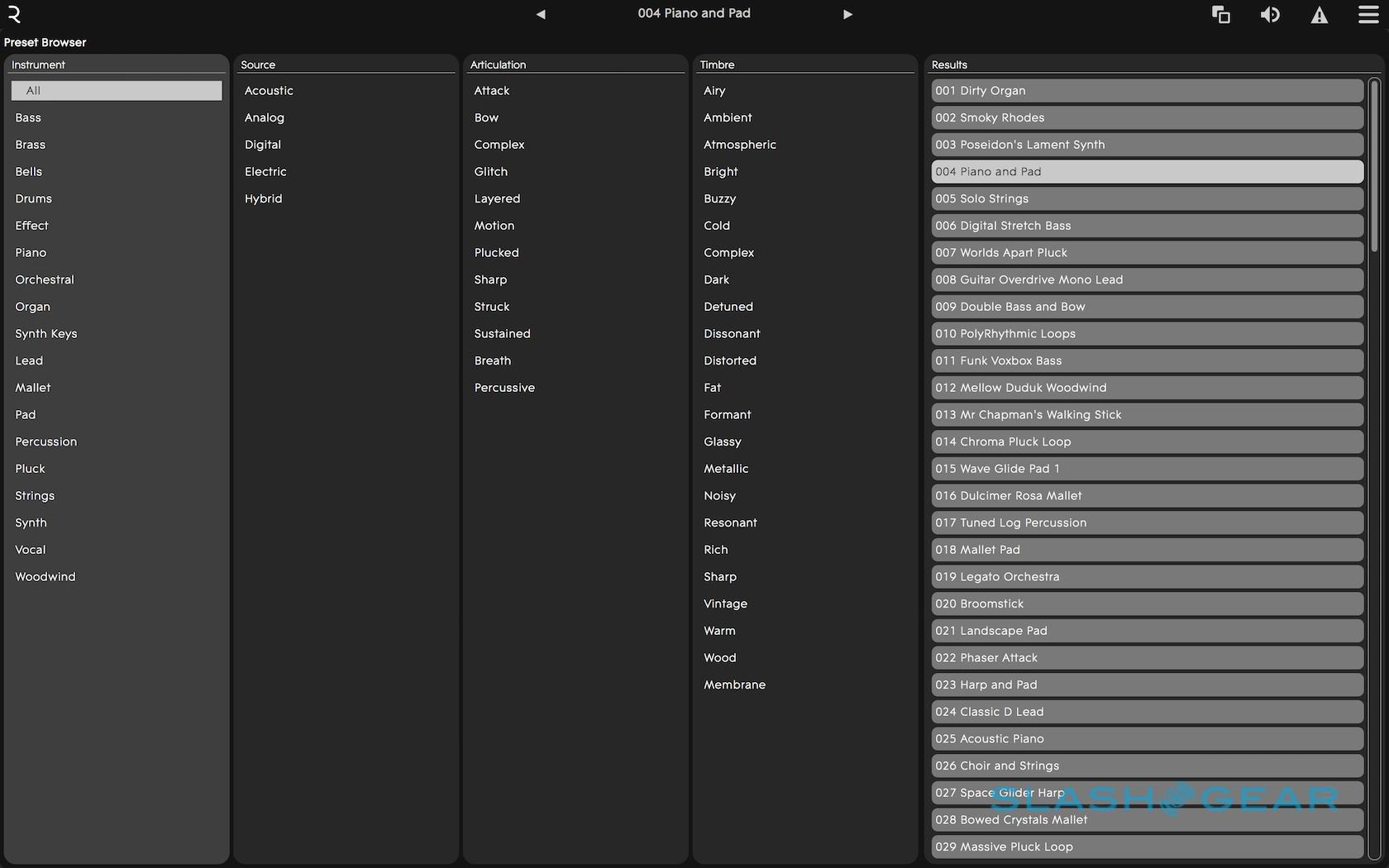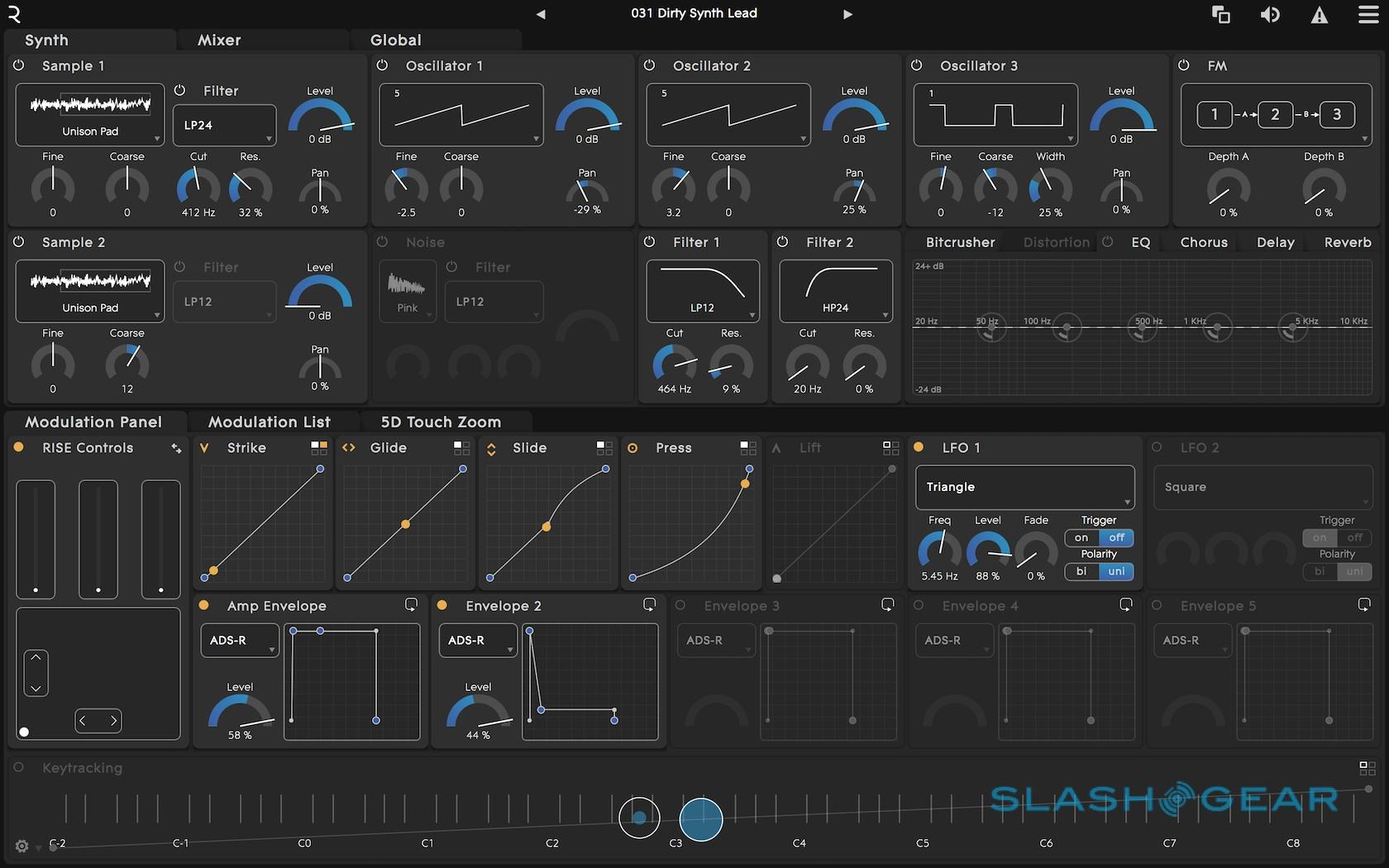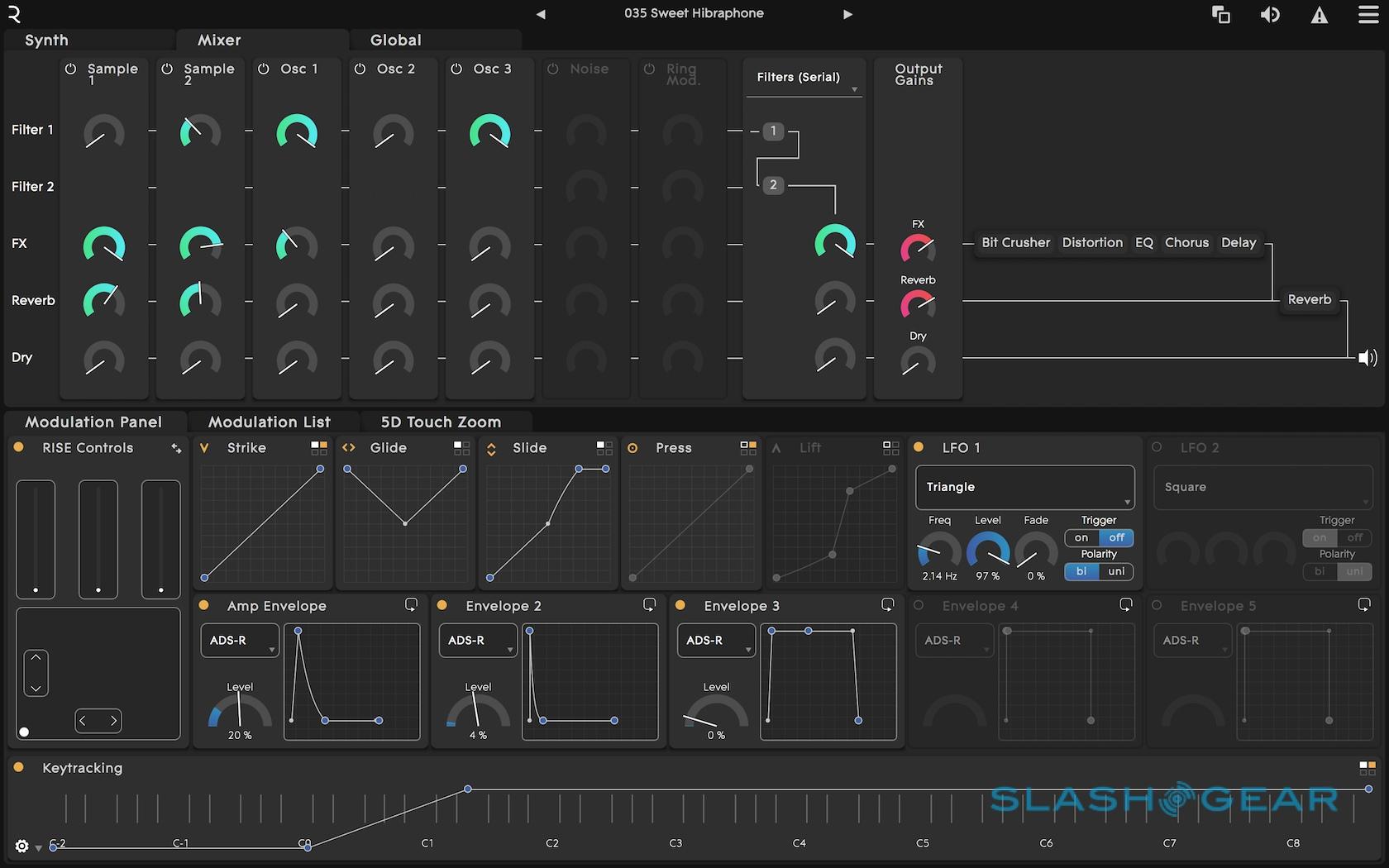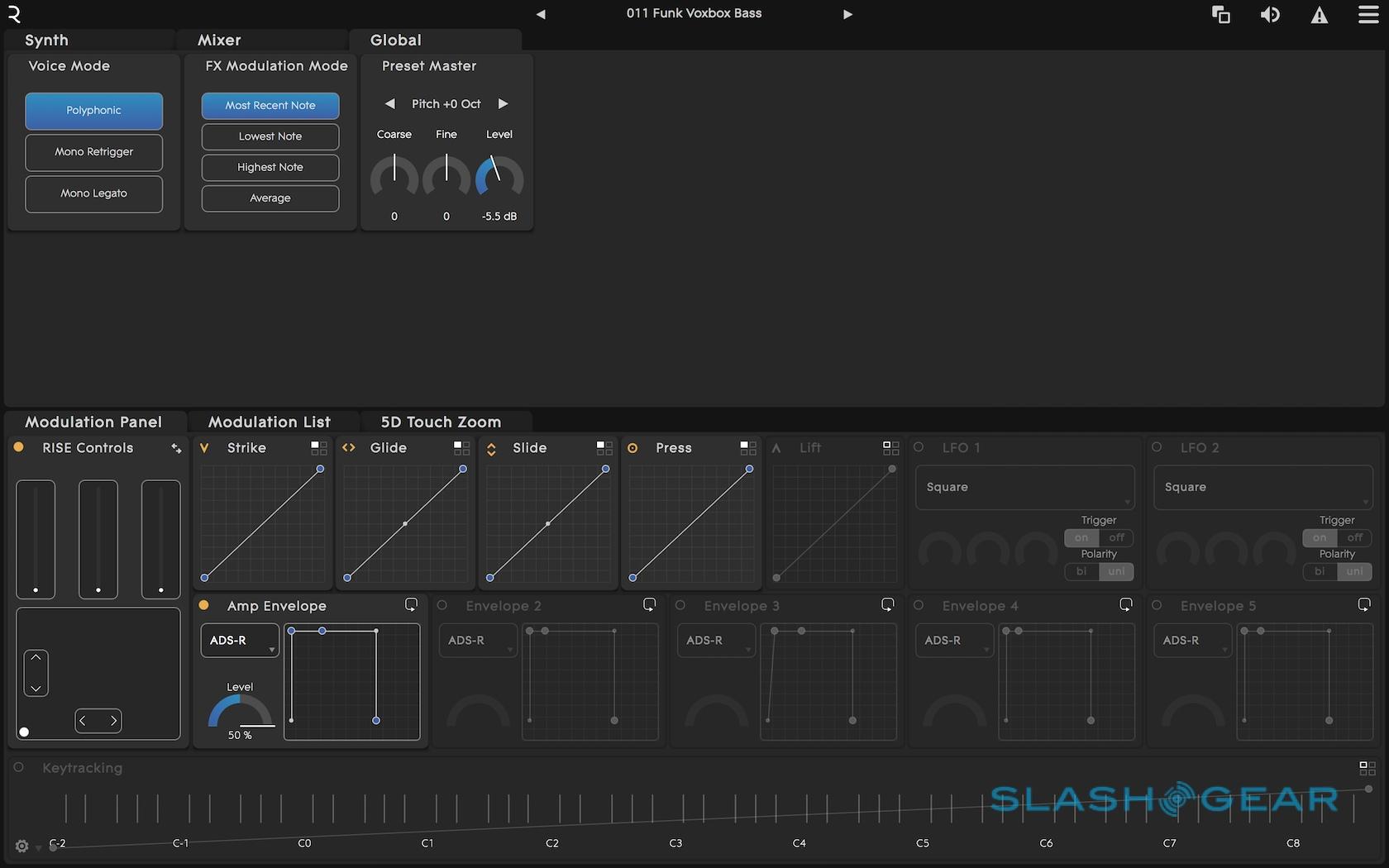ROLI Seaboard RISE Review
ROLI's Seaboard RISE looks like something you'd find Darth Vader playing in his downtime on the Death Star, but it uses the force in far more interesting ways. The company's first product was the much-lauded Seaboard GRAND back in 2013. That debuted the company's unusual flexible "keywave" surface, a layer which could be prodded and poked into delivering not only individual notes but smooth glissandos, complex evolving sounds, and more.
GRAND was, most who tried it agreed, astonishing. It was also huge and expensive: ROLI followed up its first run of limited edition 88-key models with 61- and 37-key versions, but with prices from $1,999 (topping out at $8,888 for the biggest, only 88 of which will be produced) it was out of the reach of most musicians.
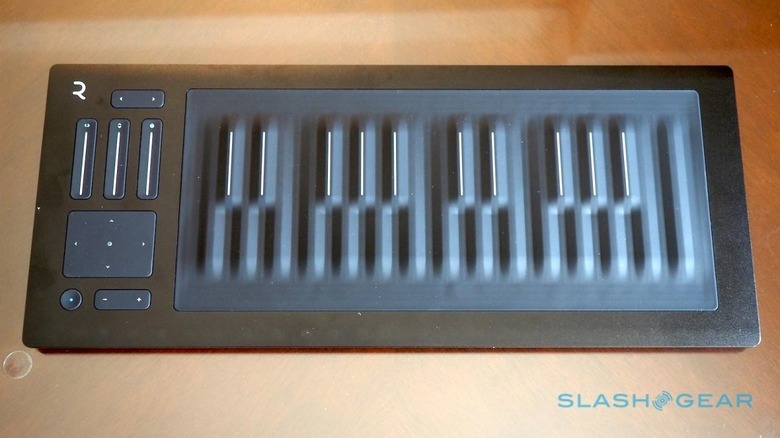
Had the story stopped there, ROLI would've joined a long list of would-be instrument innovators whose big ambitions didn't add up to mass-market adoption. Happily, the company went on to create Seaboard RISE, a $799.99 distillation of much of the GRAND's magic in a more affordable, more portable form.
RISE has 25 keywaves, which means the whole thing can be smaller; it also has a built-in battery for standalone use. The price puts it within the grasp of home music enthusiasts, while the portability makes it a legitimate performing tool for gigging musicians.
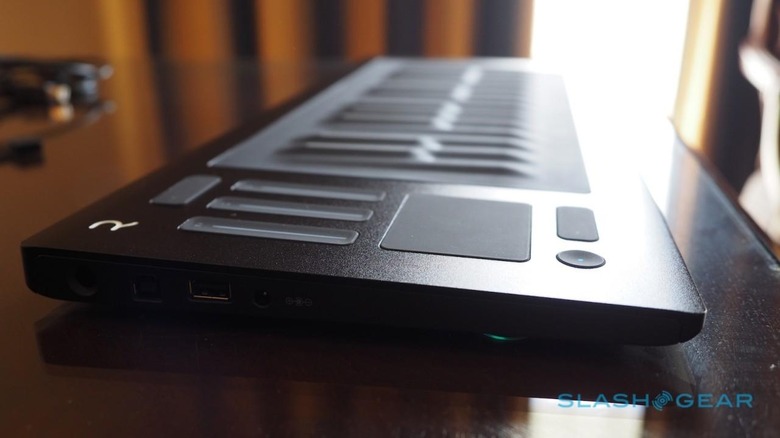
Though I rarely play now, like many kids I had piano lessons growing up. That set my expectations for what using RISE would be like, and so perhaps unsurprisingly I ended up disillusioned. Would ROLI's much-vaunted keys end up the musical equivalent of a laser-projected QWERTY keyboard, attention-grabbing but ergonomically comical?
A little extra play unlocked the reality. Yes, if your primary goal from a controller is to get regular piano or synth notes into your sequencer or other software of choice, RISE is not the best way to do it.

The lack of hard splits between the keys, not to mention the monochrome color scheme – ROLI added white lines to the what would commonly be the black keys, apparently based on feedback from the GRAND – makes it tricky to play as you might a normal keyboard.
Flip that on its head, however, and you have a more pertinent question: who said that a normal keyboard would be the best way to play every possible music, digitally? Flutes, cellos, oboes, trombones, and many, many other instruments don't force you into a single note; that we expect to be able to accurately model their play with an interface that does is frankly myopic.
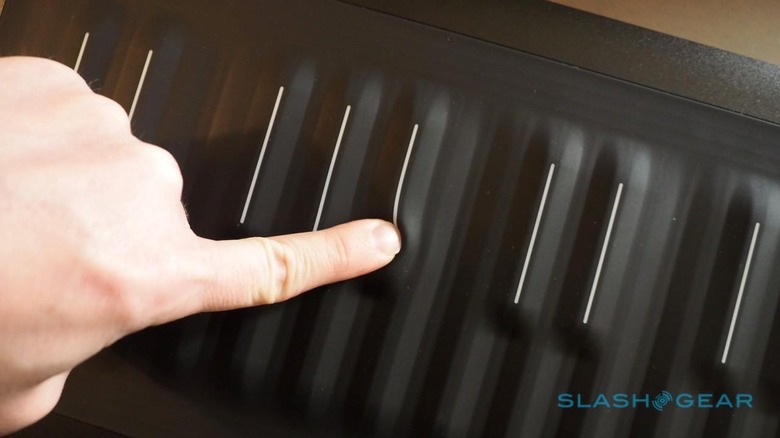
ROLI's answer to that is a control surface that nods to keys but then melts them into each other. The deeply tactile – trust me, you won't be able to stop poking, jabbing, pinching, and wiggling it – silicone layer is soaked in sensors, blurring the act of hitting an individual key into something more like 3D Touch on an iPhone 6s.
RISE breaks each press down into five components, dubbed Strike, Press, Glide, Slide, and Lift. Strike is the most traditional, the force with which your finger hits the key, then Press is a measure of the pressure applied following that initial strike. By combining a light Strike and then varying your Press force afterwards, for instance, you can create a soft voice chorus that swells over time.
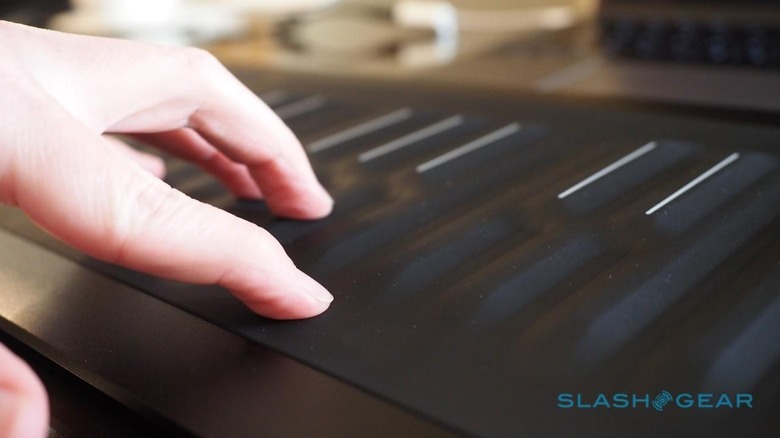
Glide is the horizontal movement of the finger, either across the keywaves or along the similarly touch-sensitive strips that run above and below the keys. Done expansively, you can create smooth runs like a swooping flute glissando; simply wobble your fingertip atop the keywave, meanwhile, and you can emulate vibrato applied to a single violin string.
Slide is effectively the same thing, only flipped 90-degrees: the movement up and down each keywave. Finally, Lift is the speed with which you pull your finger off the keywave: a sudden lift might pluck a string, while a more languid one could let the note fade out more gently.

Adding to the flexibility – and the complexity – is the fact that each factor can be customized or turned off altogether.
It may be smaller than the GRAND, but at 19.88 x 8.27 x 0.9 inches RISE is still pretty large. It's also built like a tank, with a metal chassis that adds up to a not-inconsiderable 6.17 pounds. ROLI includes a clamshell case, but you can basically forget dropping RISE into your backpack: a fair amount will stick out of the top.
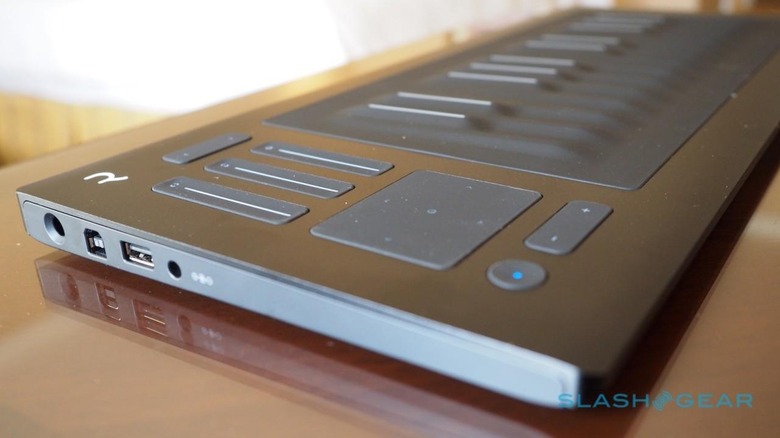
Part of that length is down to the extra closet of controls on the left side. There, you have an X-Y pad, three sliders – mapped generally to control Glide, Slide, and Press – and a couple of other buttons for skipping octaves and stepping through presets.
Labeling is minimal, which helps with the dramatic looks but also means you have to remember what each does. Only a small handful are backlit, too, so low-light playback can take a little getting used to.
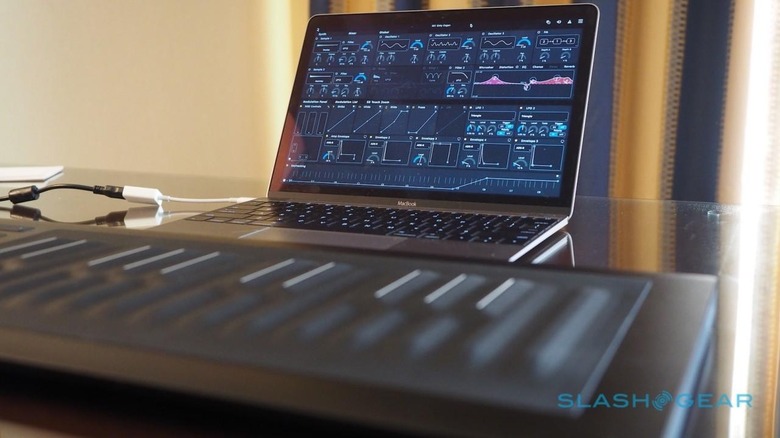
Still, you'll have the display from your laptop or smartphone to light the way, since RISE has no onboard sound engine. Whereas the GRAND was designed for standalone use, its smaller sibling relies on an external audio engine, connected via MIDI over either USB or Bluetooth.
ROLI provides a soft synth called Equator, available for PC or Mac, and which can run either as a standalone instrument or as a VST/AU plugin for your DAW of choice. Effectively Equator takes the mass of MIDI outputs produced when each keypress has five unique factors attached, and wrestles it into something you can actually play.
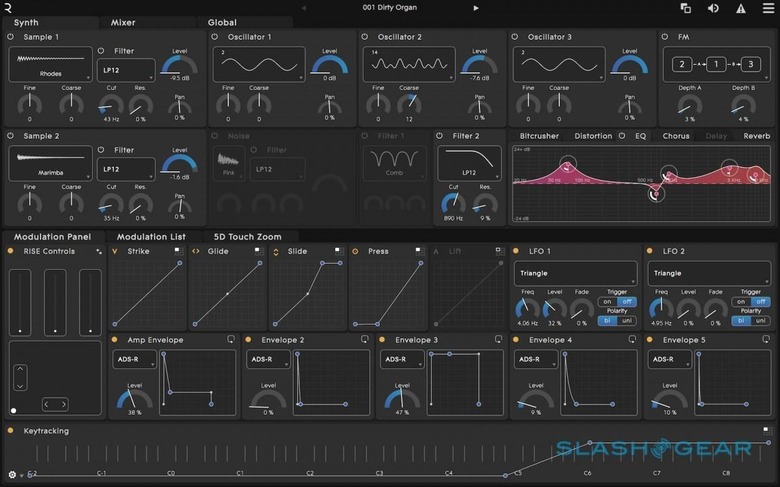
It looks a little complicated at first, but Equator is actually pretty straightforward. ROLI includes a few hundred different presets, organized not only into the usual categories like brass, organ, strings, and synth, but how they're articulated (sharp, sustained, bow, etc.) and their timbre (bright, dark, glassy, vintage, etc.) each with its own set of Strike, Press, Glide, Slide, and Lift settings shown on a little graph.
Tinkering is easy: you can toggle the five gestural dimensions on or off altogether, or reshape how they react. Pressing a keywave gives a visual readout of how each parameter is being enacted; the same is true for the X-Y pad and sliders.
If you're even more keen to get your hands dirty, you can experiment with there three oscillators, noise generator, and pair of sample modules each sound is made up of, not to mention things like chorus, delay, distortion, EQ, reverb, and more.
Equator won't actually record your playing, for that you'll need a third-party DAW app. The really ambitious can bypass ROLI's synth software altogether and take the raw MIDI output from RISE and feed it into their sound engine of choice. The ROLI Dashboard app, also included, allows for granular control over the global expression parameters that effect such use, as well as handling things like firmware updates.
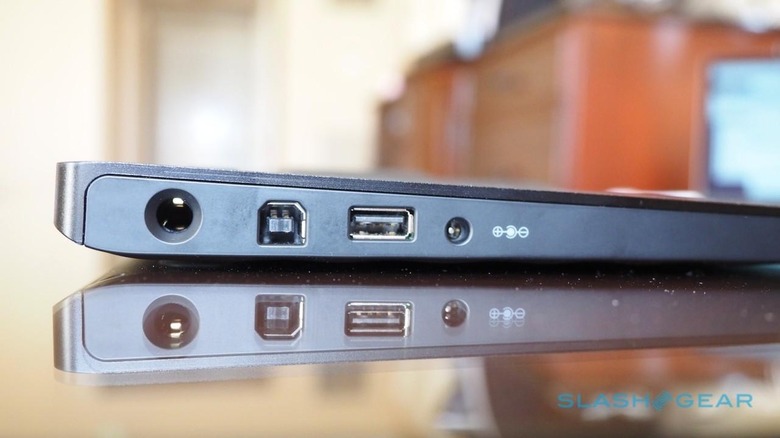
NOW READ: ROLI Noise is a free iPhone synth
Originally, RISE's dependence on Equator meant that you really needed a computer to get anything from it. That changed with the arrival of ROLI Noise for iPhone, supporting a MIDI connection over Bluetooth.
While you can play NOISE as a standalone instrument with the iPhone's touchscreen – including taking advantage of 3D Touch on the iPhone 6S – it'll also work as an external audio engine if you have a RISE, too.
RISE's non-removable battery is good for as much as twelve hours of standalone play, ROLI says, though since it recharges whenever connected via USB I never ran into a shortage of power during my testing. I'd like to see a way to turn off that auto-charging, in fact; plugged into a MacBook – via a USB-C to USB dongle – I would've preferred to leave the notebook's power untouched.
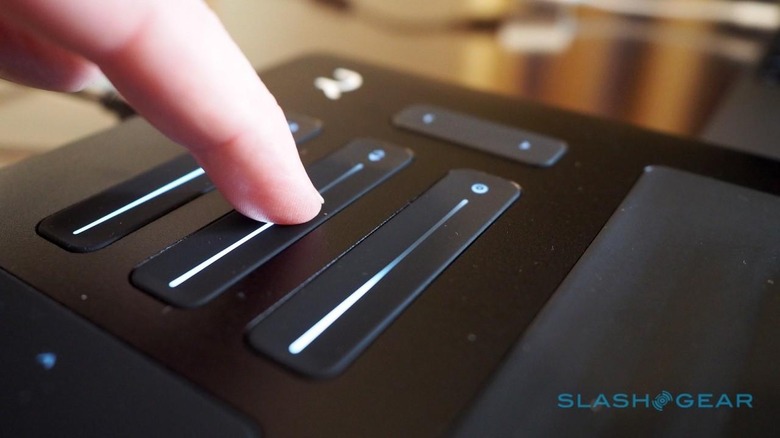
Though it seems intimidating at first, the more you play with RISE the more its potential is revealed. If you're into weird, glitchy electronica then the freedom of the keywaves allows you to easily create swooping, stuttering sounds that would normally demand frantic fiddling with X-Y controllers and more.
On the other hand, if your sound palate usually sticks to more traditional noises, the ability to generate natural string, brass, and percussion with all the variations of an analog instrument is astonishing. Sure, you could pick up a MIDI clarinet controller, or a MIDI violin, but RISE gives you all of those same parameters without the complexity of a dedicated instrument analog.
Wrap-Up
If you're a pianist just looking for the best way to get the notes in your head into your laptop, the RISE is probably not for you. Not only is is considerably more expensive than a regular keyboard-based MIDI controller, it's actually much tougher to play in the traditional manner.
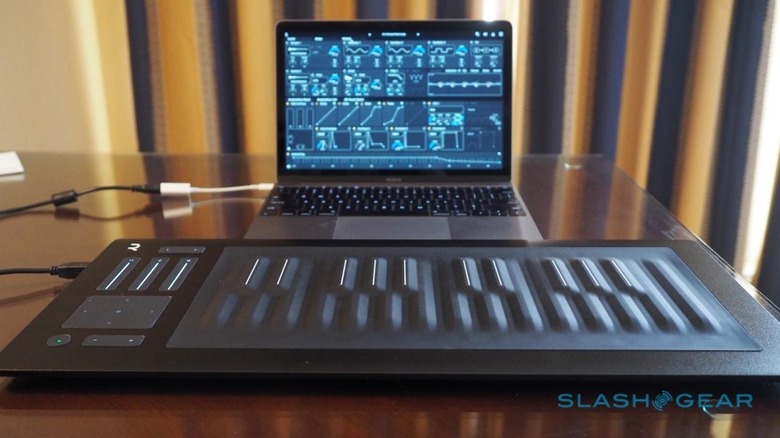
Treat the keys as nothing but a starting point, however, and RISE's appeal increases exponentially. Musical novices I sat in front of its squidgy surface were soon experimenting with sound in ways that most controllers don't really encourage; I can only imagine what more adept synth users might be able to come up with.
$800 might seem like a lot for a keyboard controller, but in reality RISE is nothing of the sort. It's an instrument in its own right, a new and compelling way of manipulating sound that borrows the best of the analog and digital worlds, and a reminder that touch is about a lot more than just the cold tap of a smartphone display.
MORE ROLI
[gallerybanner p="419115"]


